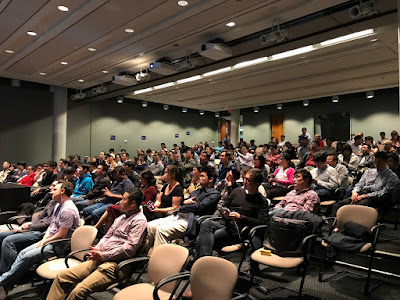There’s been a lot of talks about artificial intelligence (AI). Most notably, Google’s AlphaGo defeated Lee Se-dol last year. The latest one was the announcement of Toronto based Vector Institute for Artificial Intelligence which was backed by Geoffrey Hinton, the Godfather of Deep Learning and funded by government as well as large companies. Executives of most Internet giants believe the next decades will be a golden age for AI.
But how is this relevant to the senior IT professionals? They might think AI is only for those PhDs working for Google Deepmind, Facebook, or professors in the Stanford Lab. If they don’t have an academic background in AI and mathematics, does it mean that the AI trend is not within their reach? Is their job going to be impacted by AI?
IBM has been playing a key role and heavily investing in the AI. Watson, the world's first cognitive system, is the fruit of over 50 years of IBM research in AI. Saeed Aghabozorgi, PhD is a Data Scientist in IBM. He introduced the audience about the Big Data University (BDU), an IBM community initiative, which is also helping promote the AI technologies through free courses such as Deep Learning with TensorFlow. The course content is free, access to tool sets used within the courses is free.
The first speaker Kent Yu is the co-founder of ACSIP. He is.a software architect and certified Scrum Master, working for a world leading software company serving Fortune 500 clients. He is also an entrepreneur who founded and sold 2 startups. Although he possesses a MBA degree and a Computer Science degree, he doesn’t have any PhD degree. He is now a student of Jeremy Howard, former Kaggle president and chief data scientist, and founder of Enlitic. Starting his presentation by Bach Music Test, Kent showed how AI has become very good at imitating human composers. He then uncover the deep learning myth by comparing the human neuron with artificial neuron. Through the demos, he continued to explain how neural training works and how Convolutional Neural Network (CNN) improves computer vision. Regarding AlphaGo, Kent mainly touched the reinforcement learning.
Different from Kent, the second speaker Joseph Santarcangelo use mathematical approach to explain neural networks. Joe has a PhD in Electrical Engineering, his research focused on using machine learning, signal processing and computer vision to determine how videos impact human cognition. Joseph has been working for IBM since he completed his PhD. His main point was “a neural network is a function that can use to approximate ‘something’ using a set of parameters”. Starting from the equation of a line, he focused on classification area to explain how neural network works.
Given the purpose of this event, Kent also shared his own experience on AI learning. He proved that coders without prior AI background could also learn how to build state-of-art deep learning models beating the best academic results. To help those audience who might like moving forward in the AI field, Kent gave his advice - Focus on Your Strengths. In other words, if you are good at programming, you had better start from reading codes rather than reading papers.
You can download the PPTs from the following links:
Kent Yu: https://goo.gl/VD27uR
Joseph Santarcangelo: https://goo.gl/ffv2IC
Kent Yu: https://goo.gl/VD27uR
Joseph Santarcangelo: https://goo.gl/ffv2IC
And you can watch the recorded sessions below:
Kent Yu:
Joseph Santarcangelo:
Kent Yu:
Joseph Santarcangelo:








